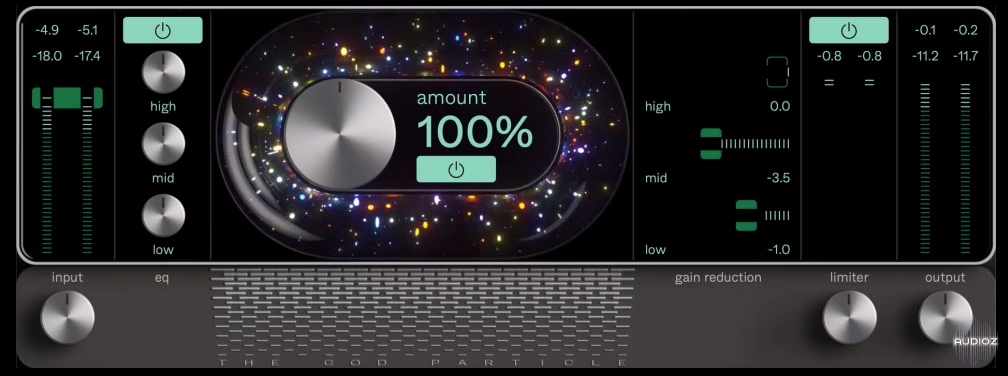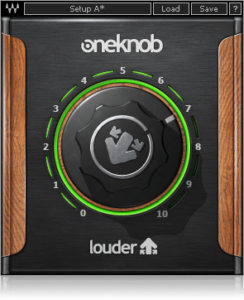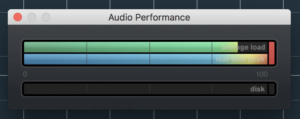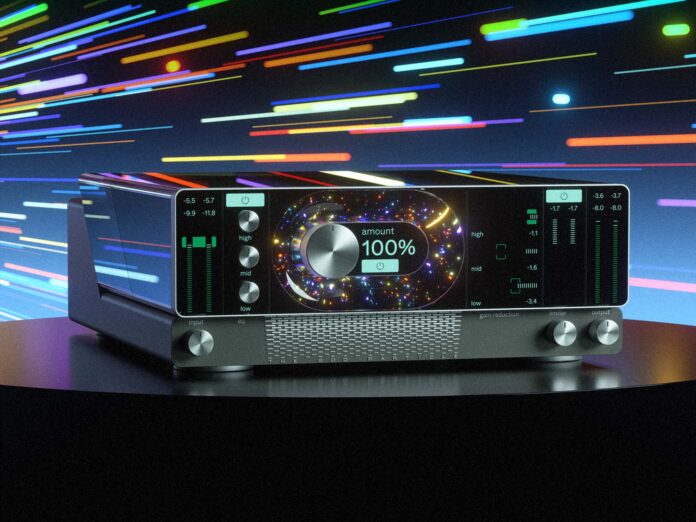Though a little light on control, Cradle’s The God Particle is big on sound. Does TGP deserve a spot in your plug-in folder? B Church puts aside his bias towards celebrity engineer plugins and black box solutions to give you his take.
C’MON, WE ALL DO IT
I liken plug-ins like the Waves’ “One Knob” series or any similar “black box“-type processors to online adult content. Though you’ll never meet anyone who’s an outspoken enthusiast, the fact is it’s clearly popular. You’ll never hear an engineer cop to using one-click mastering plugins – and your Uncle has only heard of PornHub in passing (don’t forget to scrub your browser history, Uncle Dave!).
I’ll casually admit that I’m not immune to the siren song of an easy solution to common problems, particularly getting a rough mix polished up for easy digestion or ‘hearing it finished’. These black boxes aren’t the sort of thing I usually reach for in a final mix – but again, that’s me. And like all that “horny stepsister” action lurking in the web’s dark corners, clearly there’s enough demand for its proliferation to continue.
Though Cradle’s “The God Particle” ($79.99USD, AAX, AU, VST3), based on the mix bus processing of studio ubermensch, Jaycen Joshua, may not be ‘my kind of tool’, I’m approaching this from the mindset of today’s project and bedroom studio producer. I am a mix engineer with an emphasis on the term “engineer”. I love to tinker, tweeze, and retool every aspect of every signal. Not just with EQ or compression – I’ll try different op-amps and VCA’s in my analog equipment, chasing every last bit and volt. And I admit, I am both in the minority and need to keep an open mind.

In the month since it’s dropped, the online chatter has been quite active. As you can probably guess, there’s Team DIY and Team DIFM (Do It For Me) and, as tribalism seems to be all the rage these days, differing points of view quickly descend into assailing one another’s looks, families, and abilities as an audio engineer. But I’m willing to set all of this aside for a few hours and try… try… to give this my honest, unvarnished assessment.
WHAT’S IN THE BOX?
Good question. The modernist, kaleidoscopic UI is light on explanation and controls. That’s not a mistake – the folks at Cradle are intentionally cagey about the inner workings and unlike analog gear, I couldn’t crack open the source code and tell you what’s under the hood.

What you do see on first blush are three cut/boost EQ bands, an “amount” control ranging from 0-200%, and a basic limiter “amount”. Towards the right, the interface shows what I should assume is gain reduction across each band. And yes, input and output level controls are also provided. Good thing, too, because when you turn this thing on…
…THINGS GET LOUD. FAST.
The Waves’ One Knob was, for all intents and purposes, not unlike the original L1 Limiter TDM plug-in for ProTools. While the analog purists sneered on, arms crossed in defiance, DAW-types like me were stinking drunk with new-found power, slamming mixes with such giddy abandon the CD-R would melt. Of course, it’s been twenty-five years since then and we’ve collectively agreed to back away from such pancaked mixes. But again, like the tawdry online porn metaphor above? People still give in to their desires when they think they can get away with it. Go listen to the latest SoundCloud rap sensation. On second thought, do your ears a favor and just look at the waveform.

So yes, your initial impression loading up The God Particle is “Smite Mode“. Old Testament-style locust-plagues are unleashed in the form of the limiter is adding 5db of gain right from the getgo*. A plug-in with a god complex? Now I’ve seen it all. So, while you have any objectivity or useful hearing left, hit bypass and pull everything back. Still more. Back. Back. Back. A little more. There you go.
(* In talking with the Cradle team, the 5db limiter gain setting mirrors Jaycen Joshua’s default setting)
Okay, now we can engage thrusters and get a more listenable take on what’s going on here. Pushing the interface’s “amount” control forward from null, you can hear three things happening simultaneously – and they’re seemingly commingled by frequency and amplitude. The multiband limiting part was not hard to pick out and, provided you’re not hitting the mix bus too hard to begin with, you can gun it pretty hard before the distortion becomes too obvious.
But this is not a multiband limiter alone. The deeper you push The God Particle’s ‘amount’ control, more excitement and presence find their way into your mix. And again, we have to guess here, but the stereo image begins to widen on higher frequencies. Not a ridiculous amount, but I’m certainly hearing it as I switch the plug-in in and out of bypass.
To the right, the UI displays the amount of gain reduction across the three fixed frequency bands – matching the three gain controls on the left. Again, there’s not a whole lot of tangible documentation about the trickery inside, but my metering has got my educated guess at 500hz and 10kHz as the fixed crossover points. Would I like The God Particle better if I could control these? Yes. Would a sidechain input be nice here, too? I wouldn’t say no.
ARE YOU THERE, GOD? IT’S ME, B. CHURCH.
I’m trying to mentally profile the intended user – as an aging chucklehead like me with all his precious knobs and meters might be just a bit outside the target. “Mastering” has taken on a much different meaning even in the past five years, let alone twenty. And I could most certainly see people who choose to not to use professional engineers to master every latest concoction finding a lot to like here. In the context of modern pop, R&B, rap, and EDM, The God Particle definitely adds that tremendous, in-your-ear presence.
The metering does give you a clear picture of your program, peak, and db LUFS levels as it travels through the limiter stage. And I do cringe at the prospect of any loudness units discussions, as it’s probably the most shopworn topic amongst project and bedroom studio producers (except saturation, of course). But it is a good gut-check as you try to be both louder than the other guy now and after streaming services decide if you’ve pushed the needle .1 db too far.
Make no mistake, if you want to just push things right up to the -.0001 dbFS wall, The God Particle will oblige with abandon. And truthfully, it does it quite transparently – certainly as good or better than many of the ‘mastering’ plug-ins out there today. It’s musical, provided you’re feeding it a good mix to begin with. If not? Well, you’re going to hear what you need to fix much more easily. That’s a good thing. Turn The God Particle off and tighten things up.
RETHINKiNG YOUR FLOW
In use, I found that the two test mixes I did worked a lot better when I pulled all of the other dynamics processing off of busses and mixed into The God Particle “Brauer-style“. Adding The God Particle in the late stages seems to limit its usefulness – but pulling your faders down and working things up bit by bit with the plugin set to 100% yielded better results. Keep dialing the ‘amount’ up and down as you do, as you’ve got 100% in either direction to fine tune.
On that, I found my personal favorite use for The God Particle: Automation. Verses and quiet passages? Keep it on the leash. Heading into that big money shot moment? Automate the amount along with the song’s flow and you will definitely use the studio as an effective Fifth Beatle.
Remember, just because a product is marketed as one thing does not mean you’ll break it or get your license canceled if you use it for something else. It’s software. And their exalted God didn’t send a plague for trying his precious particle on drum overheads, guitar groups, keys or loops. To be sure, you can throw a lot of excitement at any source, even voices.
THOUGHTS AND PRAYERS
Big surprise: I’ve got a few gripes here. First of all, if you’re pulling The God Particle in at the end of a resource-intensive DAW session? You better have some room in your hardware buffer. This plug-in will put a spank on your available CPU resources. I do not use a tremendous amount of plug-ins in my mixes – and economize resources (a holdover from the days of additional DSP engines costing an additional five grand).

But even with a modest amount of processing power, pulling The God Particle into duty took my gas gauge from 22% to 48%. That’s the point where screen redraws falter and sputters happen. As I use a computer with shared video memory, the Timothy Leary-inspired interface, with all its dancing lights, is also munching down available resources. To their credit, the Cradle team have reached out and are interested to know my particular setup specs in hopes of catching something on my end or theirs. Try getting that kind of attention from rhymes-with-Avid. No, seriously, try it.
The God Particle requires a proprietary authorization app and, much as I could copypasta this section from many other reviews I’ve done over the years, I’ll start fresh: This is unnecessary bloatware. Full stop. I’ve given a pass to Waves and Arturia over the years, but I’ve got dozens of plug-ins from each. Now, in all fairness to the Cradle team, they have many more plugins in the hopper – so we’ll give this a hall pass… for now.
My last issue here is the level-smashing The God Particle applies by default. Whether it’s Mr. Joshua’s default setting or otherwise, I should imagine the sorts of users who are swayed by the celebrity engineer name and ‘one click mastering’ premise will confuse louder with better. The way to use software like this is to add it in slowly, not start at “Death Magnetic”-inspired crush-ola. We’ve got enough pancaked mixes out there.
SMASH RESPONSIBLY
As I’ve said a million times before, I really try and give 1.0 releases a little wiggle room to do some house cleaning. I’d strongly urge Cradle to take a look at the default settings for The God Particle – users shouldn’t have to hit bypass the second they turn it on and get it under control. Less-experienced mixers will not want to relinquish their newfound smackwall – but if they were to bring its effect in from 0%, they would probably never push it as far as it is when you fire it up.

If we could add floating frequency cutoff points for the three bands, I’d add a half a star back. And I can think of quite a few similar plug-ins in my folder that would use half the CPU resources to do the same thing. So here’s hoping that there’s a point one update in the future that addresses these issues.
Much as I loathe the very existence of one-knob black box software, The God Particle is very good at doing that thing and certainly gives you a lot more control than just “turn clockwise”. You can push the effect pretty far before the artifacts and distortion become pervasive. For me personally? I might never even reach the 50% amount on something like this, but I do like the coloration, widening, and impact it can bring to a track.
In the world of electronic music and it’s millions of sub-subgenres, where sausages are fattened and pushed ‘over the top‘, The God Particle offers a far more refined take. Yeah, it’s crushing things. I don’t complain about a vacuum cleaner sucking dirt off the floor – that’s what it’s designed for. Any plug-in that invokes deity in its name is, unsurprisingly, going to try and push your levels to the heavens.
So as long as you can temper your Draconian desire to out-loud everyone else, this is a worthwhile addition to your arsenal. I know I’m the grumpy old man groaning on and on about the state of the industry, but I’m not entirely wrong. Use The God Particle responsibly and it will sweeten your mixes ably. Smash it into a distorted, flat-topped mess? Well… that’s your choice, too.
As of press time, B Church added a second small monitor to keep this plugin active where nobody can see it. Yes, even “Mr. Analog” uses this.
- Smart combination of multiple DSP functions.
- Capable of instant-on "big" for your mixes.
- Would love to see floating EQ points.
- Big hit on available CPU resources.
Be the first to leave a review.








